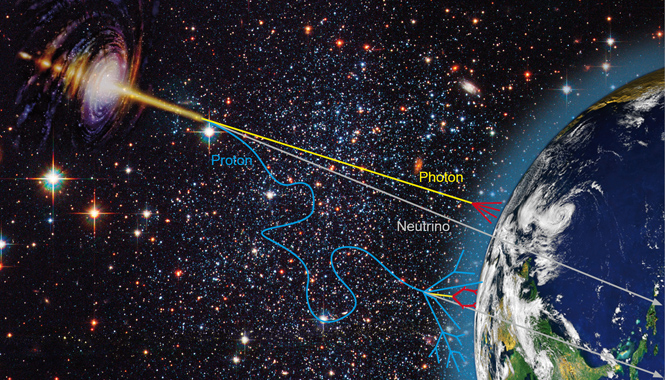Neutrinos, often characterized as elusive fundamental particles, straddle the intriguing line between the realms of the hypothetical and the theoretical. Unlike other subatomic entities, such as protons or electrons, neutrinos present a compelling narrative that invites both scientific inquiry and philosophical discourse. To comprehend the significance of whether neutrinos are hypothetical or theoretical, one must explore the historical development of these particles, their experimental validation, and their implications for our current understanding of particle physics.
Historically, the concept of neutrinos emerged to resolve perplexing anomalies observed in nuclear processes. In the early 20th century, the remarkable phenomena of beta decay revealed a discrepancy in the energy conservation of emitted particles. The perplexing observation that not all energy could be accounted for led Wolfgang Pauli, in 1930, to propose the existence of an unseen particle—the neutrino. Pauli’s audacious hypothesis was driven by a desire to uphold the principle of conservation laws in physics, specifically energy and momentum conservation. However, it wasn’t until 1956 that neutrinos were experimentally detected, an achievement credited to Clyde Cowan and Frederick Reines, definitively transitioning the neutrino from a mere hypothetical construct to a recognized physical entity.
What exactly are neutrinos? They are neutral, nearly massless particles that belong to the lepton family, alongside electrons and their heavier siblings, muons and taus. Neutrinos are generated in vast quantities in various astrophysical processes, including nuclear fusion within stars, supernova explosions, and beta decay in radioactive materials. One of the captivating aspects of neutrinos is their incredibly weak interaction with matter; they can traverse entire planets without colliding with any particles. This characteristic poses both challenges and opportunities for researchers, as neutrinos can provide insights into cosmic events and fundamental physical processes while remaining notoriously difficult to study.
As we examine the classification of neutrinos, it’s paramount to differentiate between “hypothetical” and “theoretical” particles. A hypothetical particle denotes an entity that lacks experimental confirmation, often serving as a conceptual tool within theoretical frameworks. In contrast, theoretical particles, while initially proposed based on theoretical predictions, gain experimental support validating their existence. With the detection of neutrinos, the community shifted its narrative from acknowledging their hypothetical status to celebrating their theoretical robustness. Nevertheless, the field remains rife with uncertainties, particularly concerning neutrino mass and types.
Delving deeper into the world of neutrinos reveals a captivating phenomenon: the observation of neutrino oscillation. This groundbreaking discovery suggests that neutrinos, rather than being massless as once assumed, possess a tiny but finite mass. Such oscillations emerge from the transition of neutrinos between three flavors: electron, muon, and tau neutrinos. This discovery spurred rigorous inquiries into the Standard Model of particle physics, leading to a reevaluation of the fundamental premises upon which it stands. The implications are profound, hinting at physics beyond the Standard Model and prompting the search for new particles and interactions.
The experimental quest associated with neutrinos encompasses numerous projects and collaborations across the globe. Experiments like Super-Kamiokande in Japan and the IceCube Neutrino Observatory in Antarctica epitomize the confluence of ingenuity and sustained scientific effort. Super-Kamiokande has probed for supernova neutrinos, scrutinizing events from distant galaxies, while IceCube seeks high-energy neutrinos originating from cosmic sources, such as active galactic nuclei and gamma-ray bursts. These endeavors not only reflect the ongoing commitment to elucidating the role of neutrinos in our universe but also underscore their relevance in the search for dark matter and the understanding of cosmic evolution.
Moreover, the conundrum of detecting neutrinos has led to innovative technologies and methodologies that enhance our understanding of particle interactions at unprecedented scales. From the use of massive underground detectors to the application of liquid argon time projection chambers, the scientific community continually pushes the boundaries of technology to unveil the enigmatic behavior of neutrinos. Such advancements promise to bridge existing gaps between theoretical physics and experimental validation, deepening our comprehension of fundamental processes.
The implications of neutrinos extend far beyond the confines of particle physics; they resonate with cosmic events and the evolution of our universe. The study of neutrinos offers a unique lens through which to explore grand cosmic questions, such as the formation of elements in stars, the behavior of cosmic rays, and even the enigmatic nature of dark matter. As our understanding of these particles deepens, neutrinos may provide critical insights into the fundamental forces that shape the cosmos.
In conclusion, while neutrinos began their journey as a hypothetical entity conceived by theoretical means, they have firmly transitioned into the domain of acknowledged particles. However, the complexities surrounding their properties and behaviors continue to present a dynamic landscape for inquiry. The ongoing exploration of neutrinos represents a profound shift in perspective and a fertile ground for scientific curiosity, challenging us to rethink established paradigms and delve into the intricate tapestry of our universe’s fundamental structure. As we stand on the precipice of new discoveries, the journey of understanding neutrinos promises to unveil deeper truths about matter, energy, and the cosmic fabric itself.












